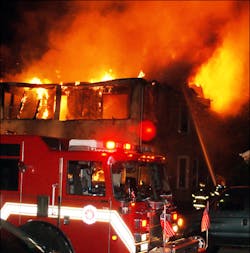We all often talk about the value of life in our business. The fact is that we protect "lives and property." We often debate the justification for entering various types of buildings that are involved in fire, and whether or not it is a worth the risk. Our risk versus reward discussions talk about whether people are home or not, is the house "occupied," "normally occupied" or vacant and how we can reasonably determine that. Most of these discussions and debates revolve around the "life" factor, the civilian life factor.
When I’m on the road delivering training programs around the country I often ask this question: “How many civilians die in the U.S. each year at fires?” I can tell you that of the dozens and dozens of seminars where I have asked this question, only one or two people raise their hands. Sometimes some folks make a guess. “Five hundred,” one firefighter will say. Another will say “Fifteen hundred.” Do you know?
I find it amazing that most of the people in the fire service have no idea of the number of people who are killed in fires in our country. Our greatest challenge is to save a life, our most vital goal, to save a life, and yet most of us don’t even have a clue about the number of our citizens that are lost each year. The number is around 3,000! That’s 3,000 each year. That’s 30,000 in 10 years.
Now I am in no way measuring or comparing this to our concern about firefighter line-of-duty deaths each year, but I must tell you, everybody knows how many firefighters are lost each year. We know when it is creeping or jumping up and we know when the numbers start going down. We pay lots of attention to firefighter line of duty deaths, yet we don’t even know how many of our "customers" are dying each year.
If you looked at the July issue of Firehouse Magazine, beside Harvey Eisner's editorial on page 16, a black and grey box. In the box are two numbers. First is the “2013 firefighter line of duty deaths at press time.” The number is 38. Thirty eight firefighters have lost their lives in 2013 so far (in mid June) in the line of duty. Not all at fires either. Some are heart attacks, some are apparatus accidents, some are falls and several other causes. The second box is the “2013 residential fire fatalities at press time.” That number is 1,214! I’m not a mathmetician but that seems like a pretty serious problem. And that is only residential fire deaths and its only as of mid June. According to the U.S. Fire Administration, from 2009 to 2011 residential fires resulted in an annual average of 2,495 deaths. Remember also that these are all fire deaths. No other types of accidents or incidents.
So what's my point? I said it in the title of this blog. What about them? What about the the almost 3,000 people that die every year in fires in America. Along with all of our RIT, firefighter safety and survival, saving our own and get out alive training, let’s not forget to strive to improve our firefighting and rescue skills. Let’s see if we can bring those numbers down too! Let’s brainstorm and develop more new tactics and tools and procedures to bring our level of “service” up a notch or two. Let’s strive to make the American Fire Service better in every way and for everyone!






